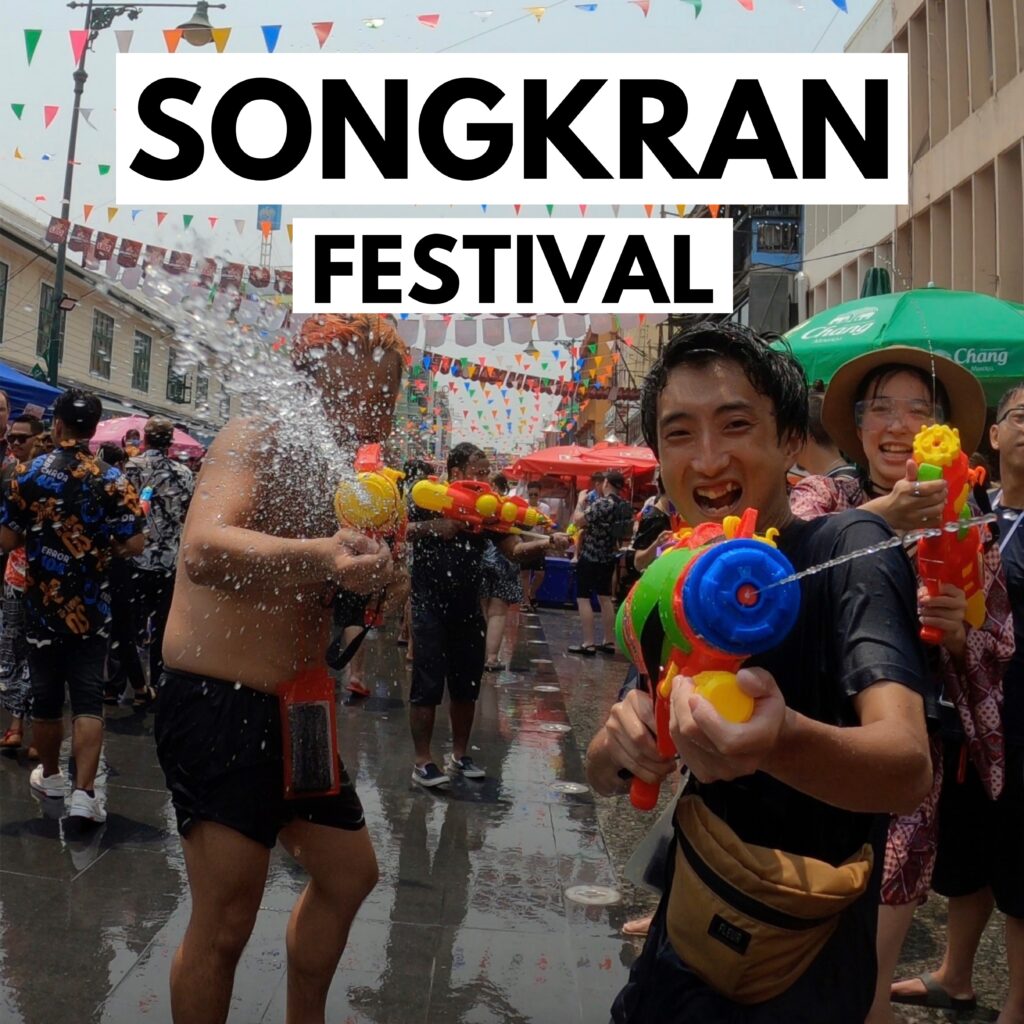We have been to Thailand several times but had not yet visited the Northern mountain region. Hearing from many people how beautiful it was, we were anxious to visit. Unfortunately, we didn’t know about the burning season in Southeast Asia when we planned our visit. Burning season is when the farmers burn their fields after the crops have been harvested. This is an ancient tradition that helps to replenish the soil for the next planting season. Burning starts in February and goes through April, and the air quality is poor and can get quite thick with smoke. If you go, plan your visit before or after these months. Northern Thailand is known for it’s beautiful mountain scenery, but we didn’t get to see any of it as all of the prime mountain look-out spots were completely socked in with smoke.

Even though we missed out on the mountain scenery we had heard so much about, we still saw so many beautiful and interesting places and ate so much great food, that we still consider our visit a success.
Chiang Mai
In Chiang Mai we stayed within the old city walls at a great place, The Vista Limited, which was within walking distance to almost everything we wanted to see, plus some nice coffee shops and restaurants. Ancient temple ruins, Muay Thai fights, and the Sunday Market. For anything out of walking distance, we used the Grab ride app. Convenient, easy, and cheap, it gets you where you’re going. This can be used in several Southeast Asian countries and is easy to download and works much like Uber.
Sunday Market
We’ll start with the Sunday Market which is one of the best markets I have been to in Thailand, so far. It starts inside the Old City walls, near the ancient Tha Phae Gate and runs one kilometer down Ratchadamnoen Road and spreads onto some side streets. The road is closed to traffic for this market which starts at 4:00 pm and runs until 10:00 pm. The selection of foods, crafts, souvenirs, and entertainment cannot be beat. Be prepared to spend several hours and have some small change as you will want to try many of the tasty treats on offer. It gets pretty crowded between 6:00 to 8:00 pm, so be prepared. We went twice, mostly to take advantage of the great food that we found there.



Ancient Ruins
There are so many beautiful and ancient temples inside the Old City walls that it’s hard to visit them all. Some are free to enter and some cost one or two dollars. The ones we visited included Wat Chedi Luang which dates back to 1385. Wat Phra Singh, which is free to enter and in walking distance of Wat Chedi Luang.

Wat Chiang Man, located in the Northern part of the Old City, this served as the residence for King Mengrai in the 1200s. Wat Phan Tao with it’s beautiful golden and white chedi. The beautiful and impressive Wat Saen Muang Ma Luang, and the Three Kings Monument. All beautiful, very different from each other, and worth a visit. We also visited many temples that are still in use. With stunning grounds and impressive architecture, we have found temples in Thailand very impressive to visit and to wonder through. We were even lucky enough to visit some on special days and were able to see the monks chanting or holding special ceremonies.


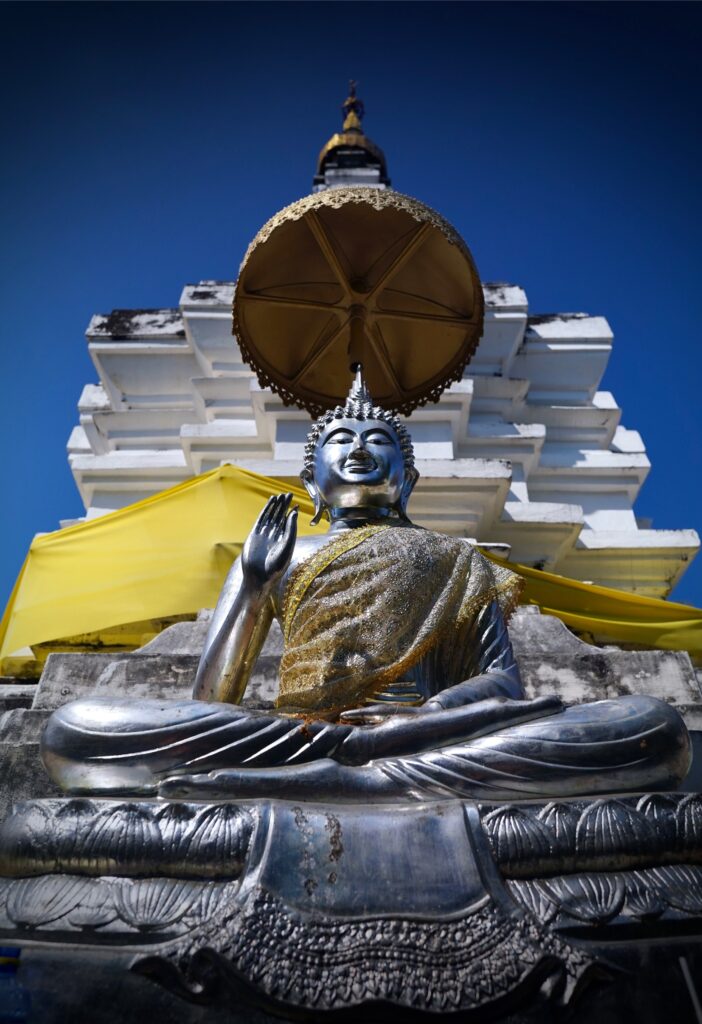
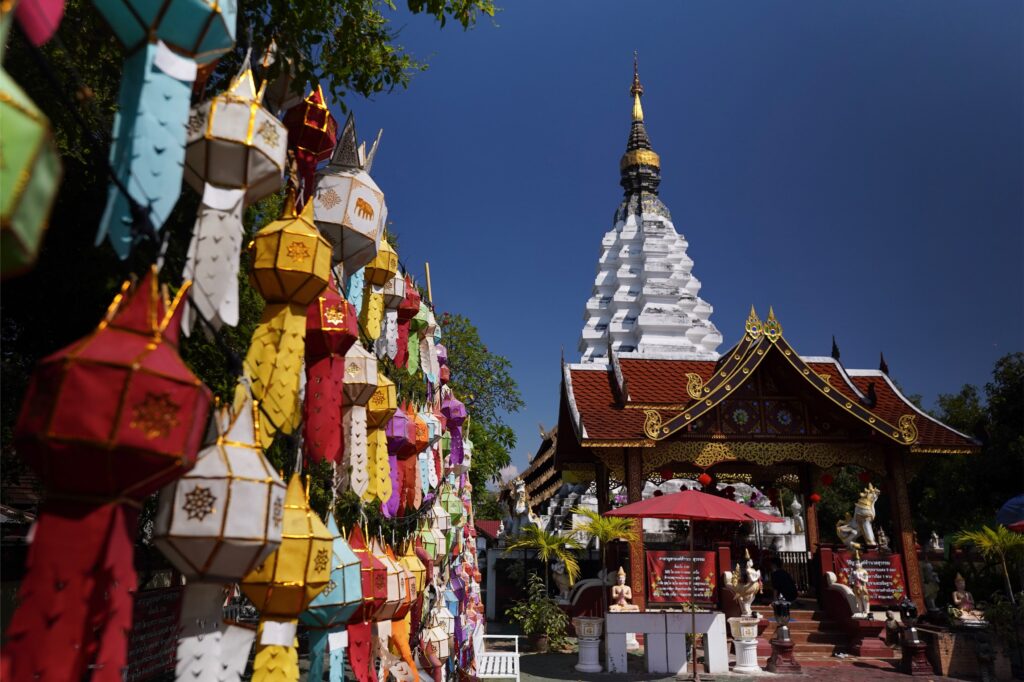
A hidden gem and a must visit is Wat Sri Suphan, also known as the Silver Temple. Located just outside the Old City walls in a residential area of the silver-working neighborhood, this is one of the oldest and most unique temples in Thailand. It is completely clad in intricately worked silver. This temple is a piece of art and even if you’re not much on visiting temples, you
will be wowed by this one. It is unlike any temple I have visited and is classified as one of the most unique temples in all of Asia.
Tuk-Tuk Lessons
Aaron’s birthday came around while we were in Chiang Mai and wanting to do something fun and different, I booked us a day learning to drive a Tuk-Tuk. This was a really fun activity, learning to drive the Tuk-Tuk was fun and easy to get the hang of. They drive you out into the countryside for your lesson. You don’t really get to drive on the roadways, just around the area where the lessons are held. We also got to tour a Karin cultural village and the rural countryside, driving past farms, elephant sanctuaries and temples. Combined with a wonderful dinner at a nice restaurant overlooking the river, it all made for a great birthday.

Muay Thai
The national sport and cultural martial art of Thailand is Muay Thai, or Thai Boxing. This ancient martial art dates back to the 13th century and is known as “The Art of Eight Limbs” and using eight points of contact, a fighters body mimics weapons of war. Muay Thai is also an Olympic sport.

If you ever have an opportunity to go to a Muay Thai fight, do it! I didn’t really know how I would feel about it as I don’t like violence or the cage style fights on television. But I quickly found myself hooked on Muay Thai. It is an ancient martial art and a very specific set of rules and conduct are followed. There is a very traditional opening ceremony with music, and fighters wearing ceremonial head and armbands are blessed by Buddhist monks.

Since we were staying inside the Old City, we went to the Tha Phae Boxing Stadium that is located near the ancient Tha Phae Gate. The fights start at 9:00 pm, and the stadium is small so there really isn’t a bad seat in the house. For around $17.00 you get to watch ten matches. The night we went there were a couple of female matches and the title fight was between a local champion and a French champion. It was very exciting! The house was pretty much full with a mix of locals and tourists. There is table service for food and drinks. It was a great atmosphere and a really fun evening. I would love to go again.

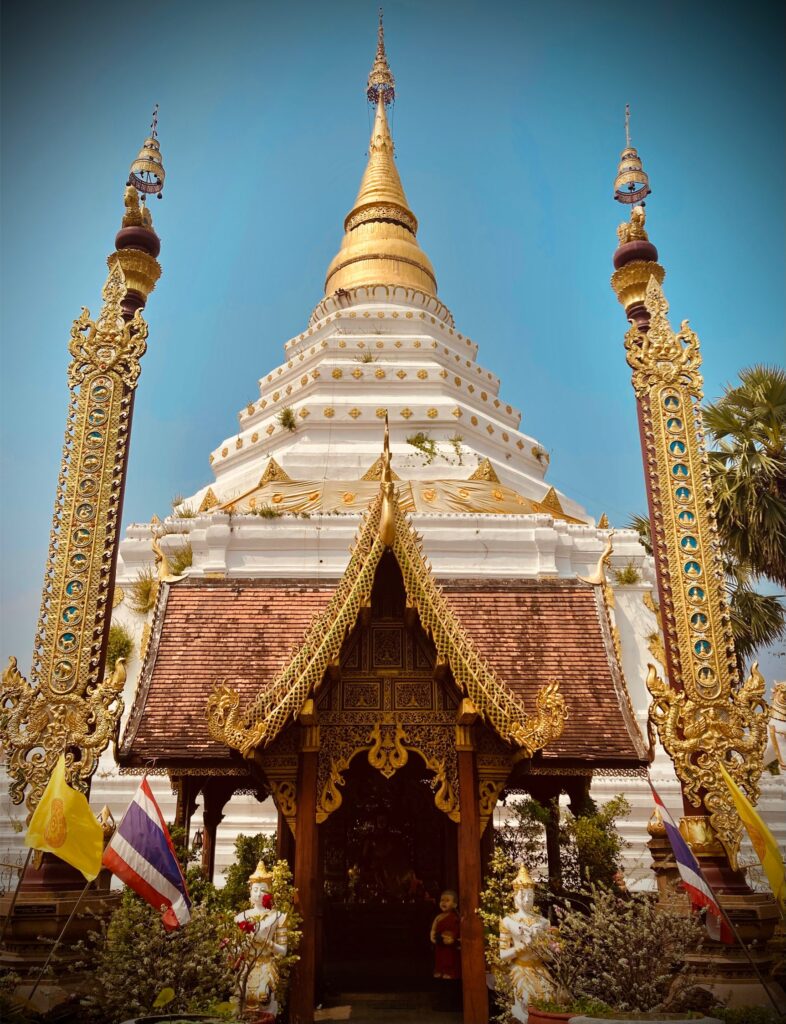


Traditional Thai Massage
You need to try authentic Thai massage at least once when you visit Thailand. But be sure you go to someone who is specifically trained in Thai massage. We celebrated our anniversary in Chiang Mai by making an appointment for the “Honeymoon” couples massage package at Zabai Massage & Spa. A romantic four and half hours that consisted of Thai massage, reflexology, mud wraps, herbal treatments, and several showers. This was followed by a beautiful presentation of fruits, sweets, juice, and tea. These ladies knew what they were doing. They were a little pricier than the walk-in massage salons but you get what you pay for.
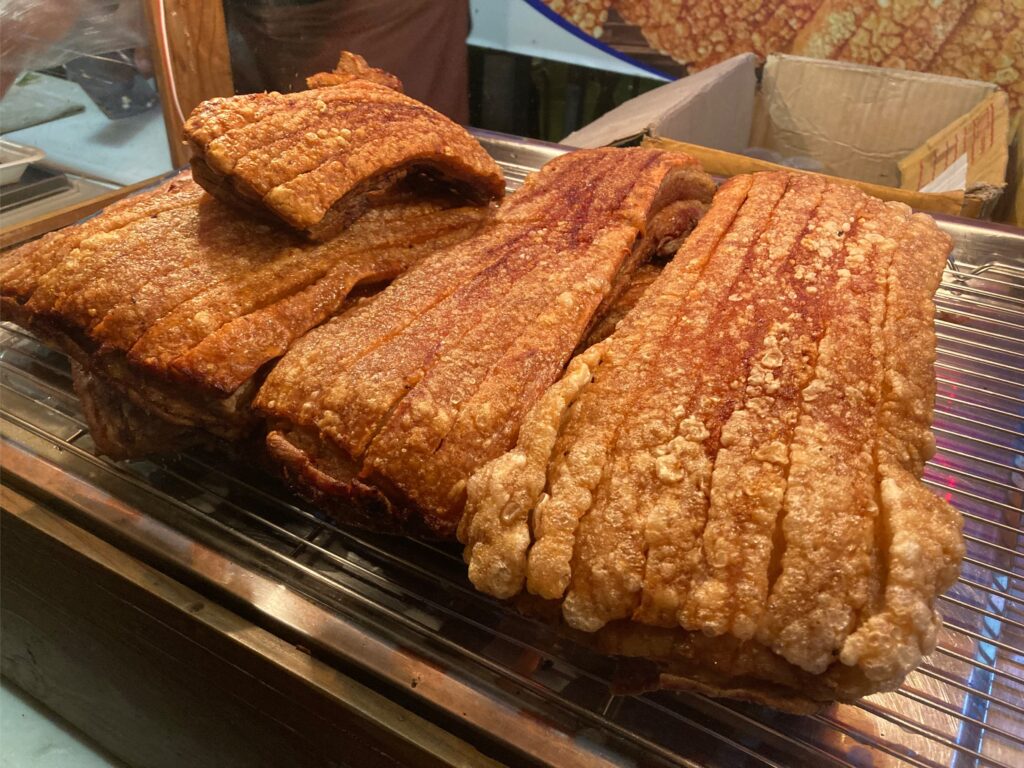

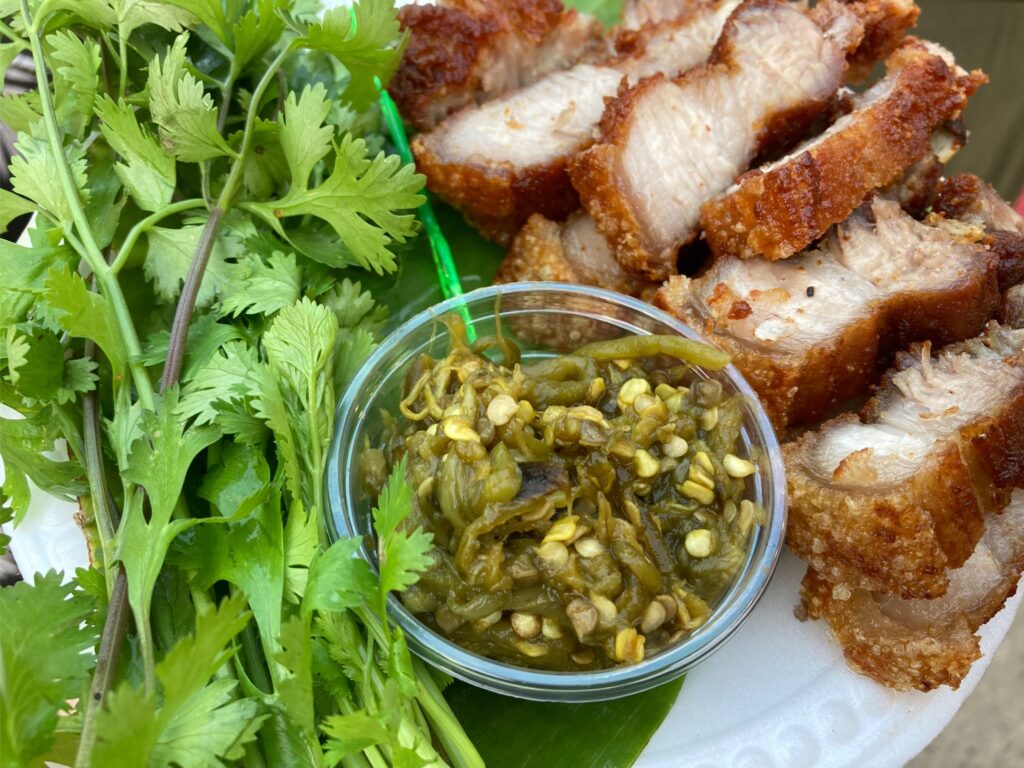
We also spent some time in another location outside the Old City Walls and were rewarded with a completely different experience in a different part of the city. Bars, nightclubs, restaurants, bakeries, shopping malls, combined to give us insight to another part of Chiang Mai. Not only does Chiang Mai have a healthy amount of tourists, which I was expecting, it really surprised me to see how many Western expats live there. In some places, I found this to take away from the atmosphere.
Getting to Pai from Chiang Mai
The next stop on our Northern Thailand tour was the city of Pai. You can get to Pai by bus, taxi, van, or Grab. We booked seats on a shuttle van for the three hour trip. At the time of our visit, there were no Grab services in Pai.
Pai
One of the premiere things to do in Pai is climb to the top of the hill to visit the Big Buddha. Officially known as Wat Phra That Mae Yen, it is an enormous white Buddha statue perched at the top of 353 steps. Not only is he impressive up close, but you get a great view of the area from the top. The steps are easy to do if you go before it gets too hot out.

We rented bicycles for the short but scenic ride to the hill. Pai is a small town with low traffic, which made for a very pleasant ride out to the hill, and then all around the town afterwards. It was a fun morning and it always feels good to get out and do something physical in the mornings before it heats up too much.


The Pai region of Northern Thailand is known for it’s caves. Located just a little over an hour’s car ride from Pai, the Tham Lod Cave System is easily the most impressive. When these caves were excavated back in the 1960s, the remains of a Stone Age tribe were found. Today, members of the local village act as tour guides. This adds to their income and helps to preserve the caves. The first two caves were enormous and had some natural light coming in. The third cave was completely devoid of light. Using a gasoline lantern, our guide led us through this very impressive cathedral sized cavern. By using only lantern light, the creatures that live in the darkness remain undisturbed. After we finished going through the third cave, we came upon a spot where the river runs through the caverns. Long, thin, bamboo rafts were waiting to pole us down the river and back out into the sunlight. As we glided along on the river, light from the outside began to reflect on the magnificent stalactites growing down from the ceiling and on their reflection in the dark water. It really was beautiful and peaceful.

The grounds around the cave were very nice and a bamboo bridge stretched over the river where we fed the fish. It was a great way to spend an afternoon.


The small town of Pai was a great place to spend a few days. In addition to doing some fun outdoor activities, we went to their night market several times. One whole street is closed to traffic every night for this market. We sampled some great local foods, sweets, saw an array of handicrafts, and heard the local school children’s choir sing.
Chiang Rai
After leaving Pai, we headed North to Chiang Rai. One of the first things we did was have a Tuk-tuk take us around town and the surrounding areas. Located about five miles outside the city of Chiang Rai you will find the areas top attraction, the White Temple. You’re not going to want to miss this one. There is nothing like the White Temple any where else in the world.

The White Temple, or Wat Rong Khun is a Buddhist temple, and a work of modern art. The original temple fell into a bad state of repair and money was not available for its upkeep. A local Chiang Mai artist and architect, Chalermchai Kositpipat used his own money to completely rebuild the original temple, plus adjacent buildings. Spending over 40 million Thai Bat, or $1,157,000.00 U.S. dollars, Kositpipat considers the temple to be an offering to Lord Buddha and believes the project will give him immortal life. The compound has nine buildings which include two art galleries and living quarters for monks. Every building is ornately decorated and represents something different.


The main building, or ubosot, is reached by crossing a bridge over a small lake. In front of the bridge are hundreds of outreaching hands that symbolize unrestrained desire. The bridge of the Cycle of Rebirth proclaims the way to happiness is by foregoing temptation, greed, and desire. There are also some statues of mythological creatures found on the bridge and all around the buildings.

After crossing the bridge you arrive at “the gate of Heaven” which is also guarded by creatures representing death. You then reach the main temple itself, the White Temple. Built in the classic style of a temple with a three tiered roof, that is where the resemblance to a regular temple ends. The all white building is embedded with mirrored glass on the outside, along with abundant use of Naga (serpents). There is just no way I can describe this beautiful building, or its wild interior fraught with ornate symbolism, pop culture images, and art. I truly don’t know how the artist came up with so many unique, beautiful, and sometimes scary designs.

There is also a beautiful golden building across a golden bridge, at the back of the complex that is stunning inside. One art gallery contains the builders art. The other art gallery features paintings from artists from around the world or special exhibits. This whole complex was one of the most wild and intriguing places I have ever visited, and everything means something. Life, death, warfare, idolatry, greed, desire, materialism, Heaven and Hell. The overall moral message is clear: people are wicked. The complex is set for completion in 2070.
The Blue Temple

Next we went to the Blue Temple. We were not surprised to learn that this temple was designed and decorated by a student of Kositpipat, the man who built the White Temple. This temple is more traditional, except for its vivid sapphire blue and gold colors. Most Buddhist temples are golden and red.

This blue color represents elements that Buddhists aspire to; purity, wisdom, and lack of materialism. The grounds are filled with magnificent statues, fountains, and works of art. With its classic Thai architecture, mixed with modern art, this complex has a completely different feel than that of the White Temple. With its bold use of vivid colors, it is unique and beautiful in its own right and definitely worth a visit. An interesting fact, an ancient temple once stood on these grounds. The Temple of the Dancing Tiger. This was when wild tigers still roamed the forests here.


Wat Huay Pla Kang

Next we visited Wat Huay Pla Kang. Lesser known and visited by tourists, this complex is very important to the surrounding community. This temple was designed by Buddhist monk and visionary, Phra Ajarn Phob Chok. What started out as just his office, is now an enormous, uniquely stylized, and very beautiful temple. Next to the temple is a towering, nine story high pagoda. The top tier is bell shaped like a traditional Thai chedi.


All nine floors are decorated with carved sandalwood images of Buddhas and many Chinese divinities. A pair of lovely golden Chinese dragons line the steps leading up to the pagoda. Also towering above the grounds is a massive, 25 story tall statue of Quan Yin. Not to be mistaken for a Buddha, Quan Yin is the Buddhist Goddess of Mercy, or the Bodhisattva of Compassion. For one dollar you can take the elevator to the 25th floor of the statue and get panoramic views of the grounds, the surrounding rice paddies and mountains. I was also very impressed by gigantic white dragons that wind their way around the grounds surrounding Quan Yin. This whole complex was beautiful to visit and very peaceful.
Bandan Museum

The Bandan Museum, better known as the Black House was another impressive work of architecture, artistry, and imagination. Both unique and strange, this one was done by famous Thai artist Tawan Ducchini. This museum is a complex of 40 black and brown buildings, all built in the style of a Buddhist temple, even though no temple has ever stood on these grounds. Buddhist art can be found throughout the grounds. What makes this museum so unique is the fact that it contains the world’s largest collection of animal remains that have been made into furniture and art.

Ducchini was a devout Buddhist, and all of his work represents the suffering man brings upon himself through desire and greed. Death and mortality are on display everywhere, reiterating the impermanence of life, which is central in Buddhist philosophy.

Even though our trip to Northern Thailand was somewhat tainted by coinciding with the burning season, we had a great time. We saw some wonderful natural and man made marvels, had some fun outdoor adventures, and ate some great food. We really got to delve into Buddhist history and art and learned so many fascinating things. If you’re ever in Thailand, and can tear yourself away from the beach, make some time for a trip to the mountains. It will be an experience to remember.
OUR NORTHERN THAILAND VIDEO

